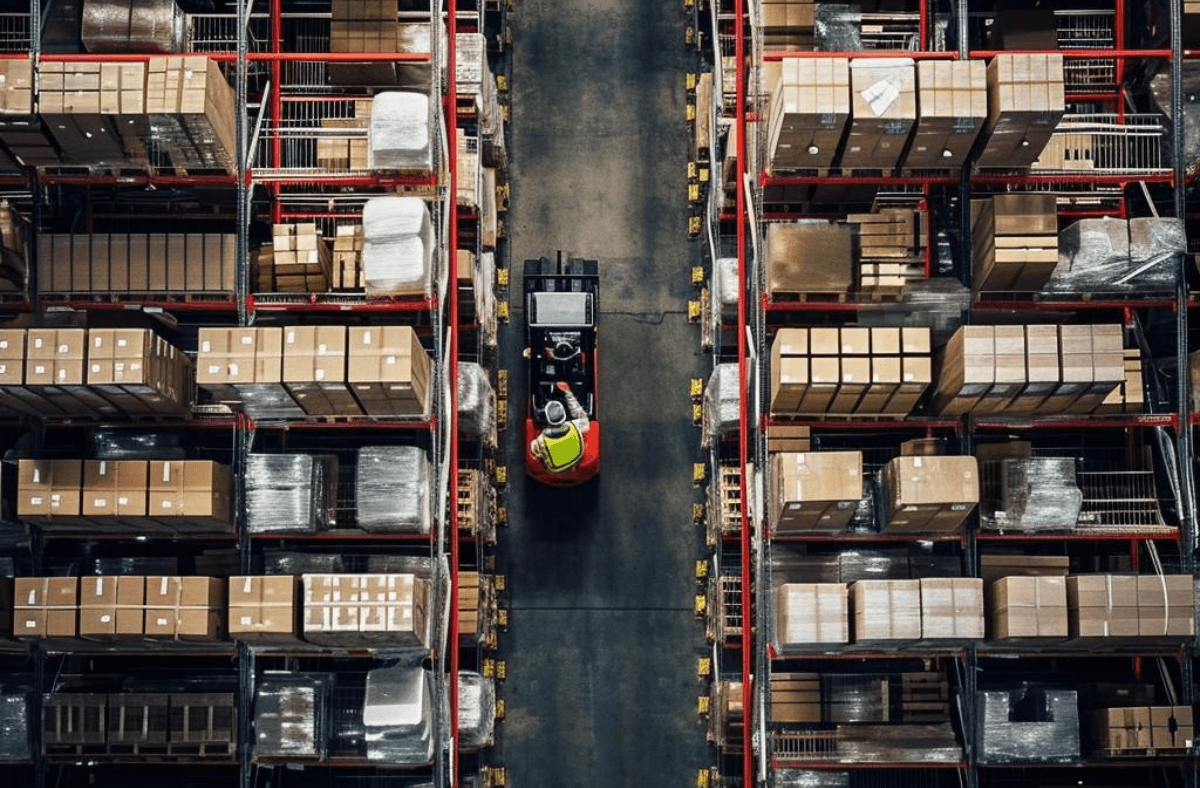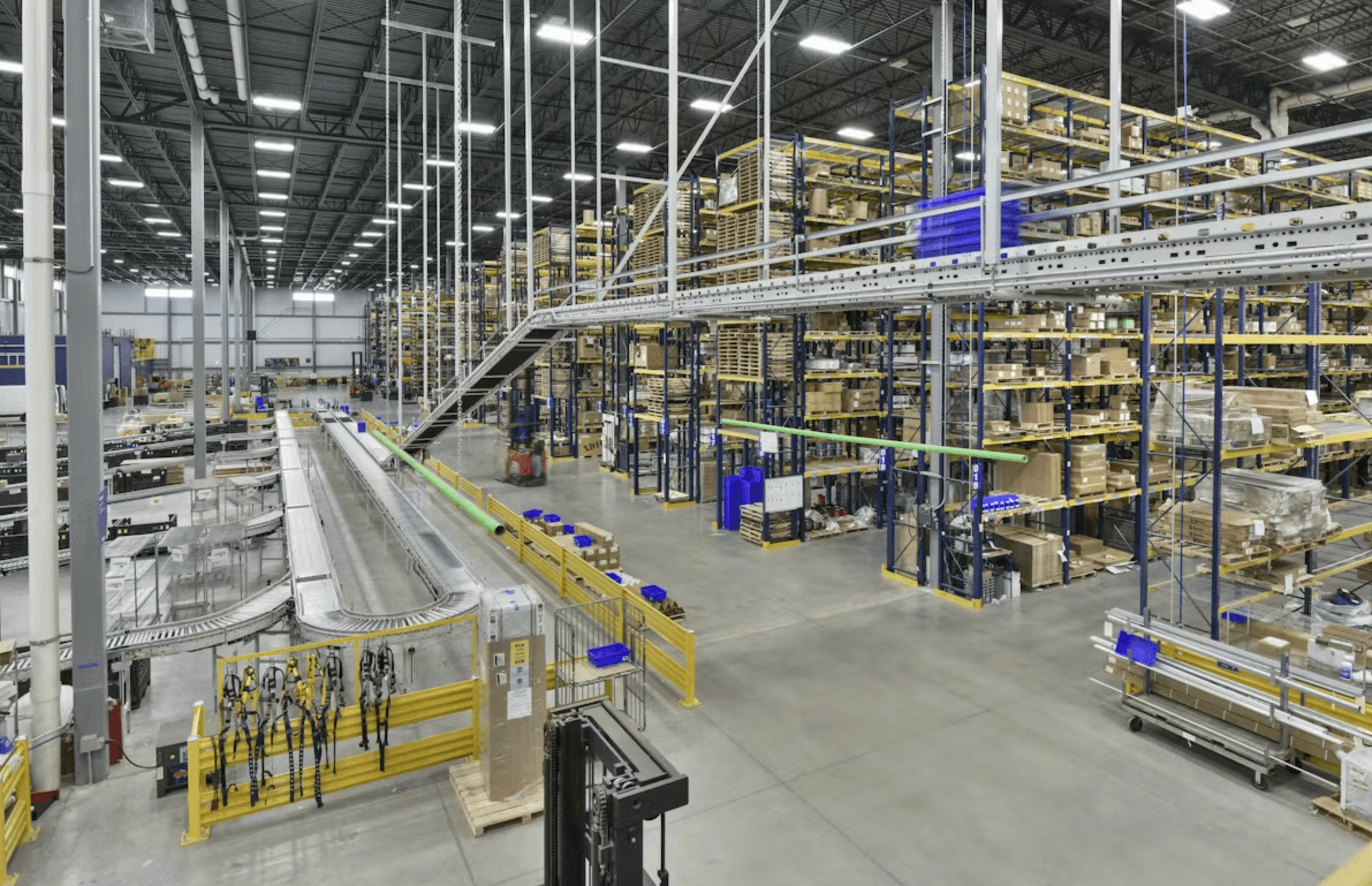How AI benefits Warehouse Management Systems (WMS)
26 Mar 2024
It’s time to think about the advantages AI technologies create to empower WMS (image by Midjourney)
Warehouse Management Systems (WMS) bring organisations numerous benefits, such as increased efficiency, improved user experience, and reduced costs. Now, it’s time to think about the advantages AI technologies create to empower WMS with new capabilities and the challenges they entail.
Warehouse management systems offer numerous benefits. They feature user-friendly interfaces that enable swift access to needed information, reducing search time and enhancing efficiency (which cuts costs). Additionally, they automate labelling, further speeding up processes. These systems also provide insights into warehouse performance, preventing stock-outs and ensuring inventory accuracy.
Read also: 8 Benefits of Warehouse Management System (WMS) Interface Redesign
Recognising these advantages, WMS applications are evolving with new AI technologies like machine learning, computer vision, and robotics. Already, numerous examples demonstrate AI's practical applications in boosting inventory accuracy, streamlining workflows, and refining decision-making processes. And with the rise of generative AI, WMS stands to gain predictive capabilities, real-time operational optimisation, and strategic insights previously beyond reach.
Let's explore AI's benefits to WMS applications and how it revolutionises our interaction with this essential tool.
1) Enhanced inventory accuracy
AI-powered systems mean a new era of precision in inventory management. Using advanced algorithms and machine learning, these systems offer real-time tracking and minimal error margins. Such accuracy improvements enable optimal stock levels while mitigating the risks of overstocking or stockouts.
A new level of precision is also achieved through computer vision technology, which uses cameras and artificial intelligence to visually inspect and identify items, enabling real-time inventory tracking without manual intervention. Computer vision systems can quickly scan barcodes and QR codes and even recognise products by appearance, making inventory checks faster and more accurate. This reduces human error, increases labour speed and improves data reliability for inventory management. Machine vision systems can also detect product inconsistencies and monitor warehouse environments for potential hazards, such as obstructions in aisles or unsafe employee behaviour.
The change also arrives in forecasting future inventory demands.
2) Streamlined order fulfilment
Integrating AI in WMS – especially through the adoption of robotics and automation – has the potential to revolutionise order fulfilment processes. Robots now undertake various tasks, including picking, packing, and transporting goods within the facility. What’s important is that they can operate around the clock, increasing the productivity of warehouse operations.
For example, GXO Logistics recently introduced AI-enhanced robotics in its warehouse as a pilot programme in collaboration with Dexterity Robotics. The robots have human-like dexterity and are capable of performing complex tasks such as depalletising, labelling, and repalletizing packages. They are designed to adapt and learn in real-time without manual instruction or setup.
AI can also facilitate real-time tracking of orders, providing customers with accurate shipping updates. This can improve customer experience and ensure transparency of the process: customers stay informed about the status of their orders, which means fewer calls to customer services and overall improved customer satisfaction.
3) Smart warehouse infrastructure
With the integration of AI, warehouses transform into intelligent infrastructures that optimise space utilisation and operational agility. Since AI algorithms can analyse data on product dimensions, demand patterns, and turnover rates, they can recommend optimal storage configurations. This way, warehouses maximise storage efficiency and speed up the retrieval process.
One example of such an approach is Werner Electric. The company introduced a smart inventory system powered by AI and digital twin technology (in collaboration with Tecsys). According to the organisation's data, the implementation improved picks per hour by 30%. By analysing and mapping routes taken by experienced warehouse workers, AI optimised pick paths and reduced travel time by 39%. Furthermore, the warehouse's digital twin allowed for real-time adjustments and optimizations, contributing to streamlined operations.

Werner Electric’s 200,000-square-foot warehouse (image by Werner Electric).
4) Seamless integration with IoT
Integrating AI and IoT devices in a warehouse, such as smart sensors and RFID tags, amplifies operational visibility and control. Real-time data from IoT divides is analysed by AI algorithms and offers insights into operational efficiencies and inventory management, improving the decision-making process. Also, it amplifies the depth of insights into warehouse operations. This empowers warehouses with unprecedented automation and foresight, enabling precise control over operations and supply chains.
5) Employee training and engagement
AI also has the potential to revolutionise employment training and onboarding. For example, AI-powered AR and VR simulations provide workers with a risk-free environment to learn standard operating procedures and practice tasks and procedures without exposing them to potential dangers. Often, AI-driven training modules feature gamification elements that introduce competitive and fun aspects to learning and daily tasks, such as challenges, rewards, and leaderboards. This way, employees are motivated to engage actively in training sessions. Of course, smoother and faster training and onboarding bring business benefits, such as reduced training time, increased engagement, and improved safety records.
Furthermore, generative AI will offer even more exciting possibilities for interactive training methods in the future. Users can interact with the WMS using natural language queries and receive explanations in understandable terms rather than pre-programmed responses. While some WMS already incorporate AI-like functions to support new insights and enhanced decision-making, generative AI offers a new approach.
6) Energy efficiency and waste reduction
AI can also play a role in driving sustainability initiatives within warehouses. AI-driven systems monitor and regulate energy consumption in real-time, resulting in substantial energy savings. Smart lighting systems, for example, leverage AI to adjust lighting based on factors like time of day and occupancy, thereby reducing unnecessary energy usage. These intelligent adjustments contribute to significant reductions in energy bills and overall environmental impact.
Additionally, AI helps warehouses avoid overstock and understock situations by accurately predicting demand and optimising stocking levels.
Challenges of WMS
Implementing AI technology in warehouses presents numerous challenges, including regulatory variations, infrastructure discrepancies, and workforce readiness. Employees may resist change, fear the unknown, or feel uncomfortable with technology. Often, resource allocation becomes necessary as employees require reskilling or upskilling programs, demanding substantial investment in their development.
Moreover, the current cost of AI technology may be a barrier for many organizations, while the complexity of integrating artificial intelligence into existing systems can hinder adoption.
Another crucial aspect is the user experience (UX) of Warehouse Management System (WMS) interfaces. While many systems effectively fulfil their roles, they often lack user-friendliness and simplicity, relying on outdated and intricate interfaces rather than intuitive dashboards. With the growing power of generative AI, there is a need for a deeper understanding of how to integrate AI mechanisms into user interfaces seamlessly.
Read also: Why business app design stands apart in UX/UI? My top conclusions
At Autentika, we advocate for adding additional layers of interaction to Learning Language Models (LLMs), supporting users in utilising AI features within internal systems, business apps, and work tools. Our research demonstrates that users cannot be left with simplistic interfaces alone, and significant efforts are required to guide them through the possibilities. Intelligent User Interfaces (IUI) are essential, adapting to users' interaction nature, context, and profiles.
If you want to discover more, you can contact Michał and learn more about our work. We have experience redesigning WMS interfaces for custom applications, such as Navigal, building advanced applications for product file management (Feedink), and designing WMS micro-apps (Cleant). Check out our case studies.for more.



